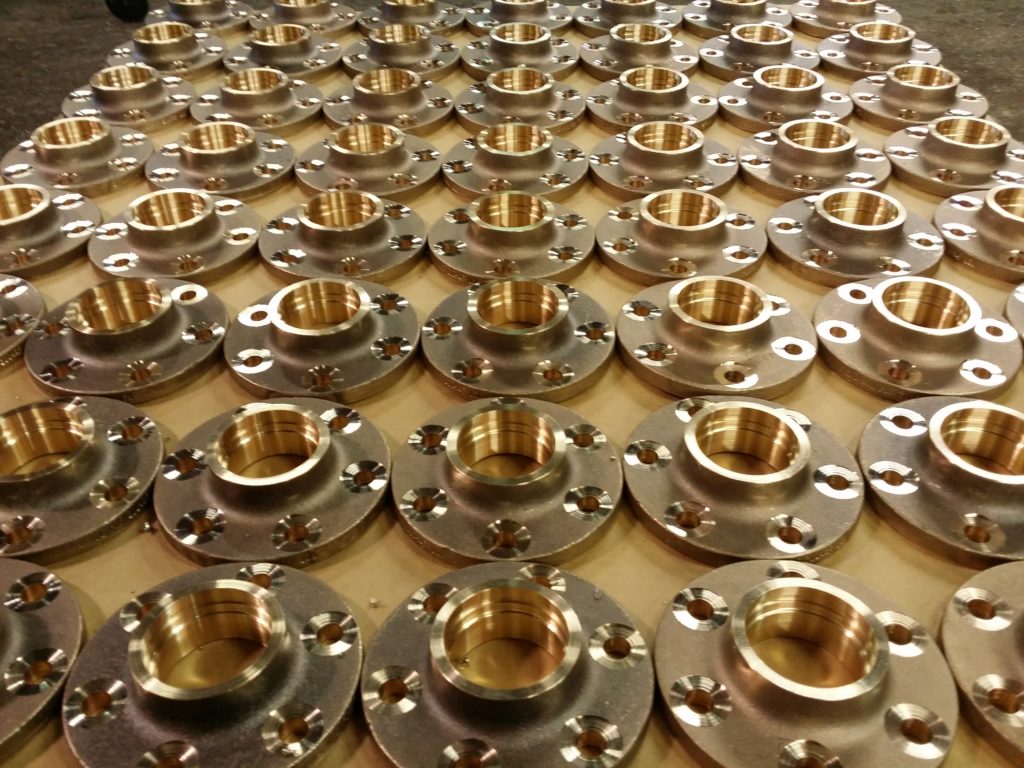
Anyone who does business with the US Navy knows, nothing is the same as it is in commercial (power plant, refinery, chemical plant, etc.) applications. The military has a MIL spec for everything, and pipe flanges are no different. Piping Supplies Inc has been making Navy flanges for over 50 years. We have learned a few things along the way and would like to pass them on to you. Hopefully the following information will help clear things up a little.
Navy flanges are specialized
In 1952 the Navy released the document MIL-F-20670: Military Specifications Flanges, Pipe, Carbon Steel, 150 P.S.I., W.S.P (for naval shipboard use). This MIL spec outlined the dimensions, tolerances, material, and all other pertinent information about pipe flanges use on Navy ships going forward. There were four different styles of flanges: Type A and Type C slip-ons and Type B and Type D welding necks. These flanges had different outside diameters, thicknesses, drilling and tighter tolerances than their commercial ANSI B16.5 counterparts.
Around that same time, in 1958, the Navy released MIL-F-20042 which was the military specification for flanges, pipe, bronze (silver brazing). This MIL spec covered socket weld flanges in 150# class, which had the same bolting pattern as MIL-F-20670, but added 50#, 250# and 400# classes. MIL-F-20042 is important because many future Navy flange prints are based on that drawing.
Basic designed applied to specific uses
As time went on, Navy shipbuilders produced prints for shipboard flanges to meet specific needs. Some were specifically for copper-nickel material, some for stainless steel and others for different applications. Some of these include 810-4715319, DF361771 (aka 803-7619364), DF314115 (aka 810-7525226) and D252943 just to name a few. All of these are based off MIL-F-20042.
Customization for your needs
What really complicates things is when a customer wants to use a MIL specs dimension but make the part from a different type of steel or alloy. We do this all the time but may have to take exception to some testing or other properties specific to the specification’s original material, etc. which does not apply in this case.
We are also able to take MIL spec dimensions and modify it to make a different style flange like a lap joint flange or a blind flange. That is the beautiful part about working with us as the manufacturer who is machining the part. You can tell us exactly what would work best for your application, and we can make it for you.
If you would like more information about Mil spec comparisons, we have documents which we use internally that we would be happy to share. Feel free to contact one of our flange experts with any questions about Navy slip-ons. socket welds, weld neck, or blinds. We hoped this helped.
